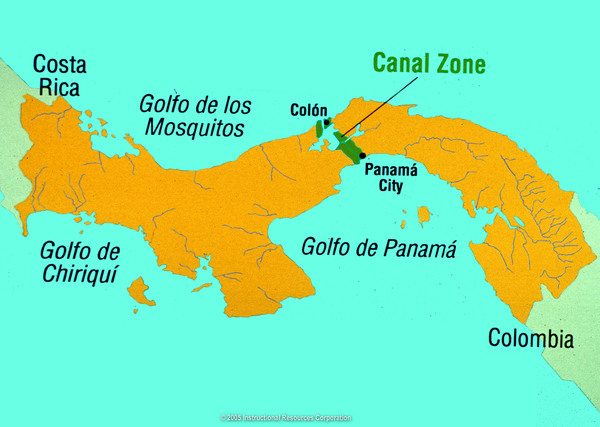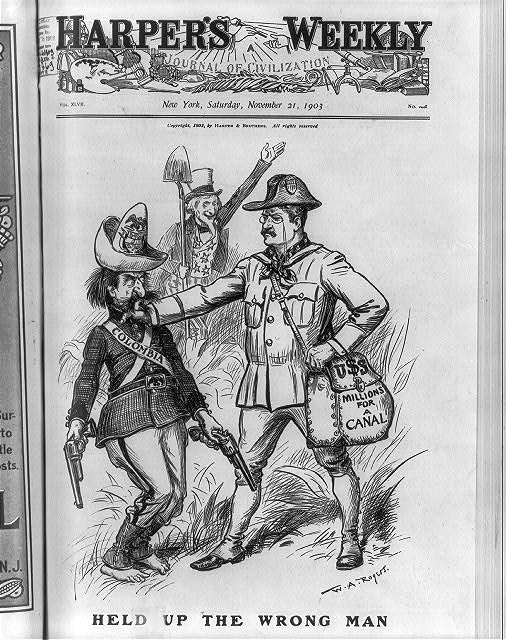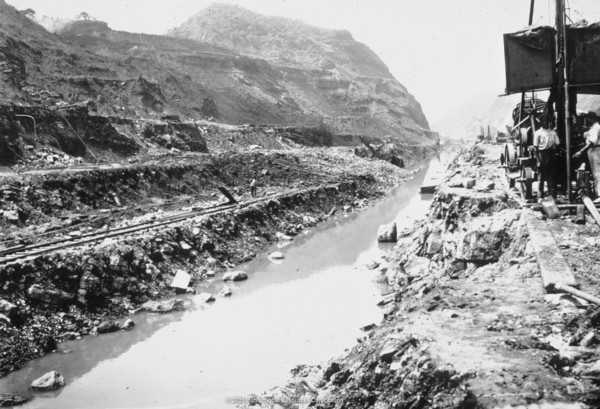Learn
Foreign Policy
Roosevelt's Foreign Policy
As President during the Age of Imperialism, Theodore Roosevelt chose to adopt a more aggressive approach to foreign policy than his predecessors. His motto, "speak softly, and carry a big stick" exemplified his approach to foreign policy matters, which led to an increased presence of the U.S. military across the globe and firmly established the nation's role as a world power.
The "big stick" referred to the military might of the U.S. Navy. Roosevelt helped transform the U.S. military into a global fighting force; one he proudly displayed with the tour of the U.S. Navy also known as the "Great White Fleet".

Roosevelt Corollary
President Roosevelt's new foreign policy approach was formally recognized as the Roosevelt Corollary, which was an extension of the Monroe Doctrine.
It enabled the United States to intervene in Latin American countries struggling with unstable conditions like debt, the threat of European advances, or social unrest. The policing powers established under the Roosevelt Corollary led to multiple U.S. interventions in Latin America (often called the “Banana Wars”.).
Read The Roosevelt Corollary and Latin America to learn more about Roosevelt's policies in Latin America.
Peacemaker in Asia
In Asia, Roosevelt and his predecessors intervened on numerous occasions in an effort to restore peace and trade with region. In China, an Open Door Policy for trade was announced that allowed the United States and other nations to trade "openly" with the Chinese. To help stabilize the region, Roosevelt personally intervened and successfully negotiated an end to the Russo-Japanese War.
These efforts not only brought both peace and protection for U.S. interests abroad, but also won Roosevelt a Nobel Peace Prize. While he worked diligently to negotiate and maintain peace, Roosevelt also stood prepared to use the power and might of the United States to protect its interests. By the end of his term in office, the United States had become actively involved in world affairs and had taken great steps toward shedding its isolationist A nation that limits its involvement in foreign affairs. past.
Read Reaching to Asia to learn more about Roosevelt's policies in Asia.
Panama Canal
By the late 1800s, the landscape of the world had changed. With the advent of imperialism and the rise of international trade, the nations of the world were more interconnected than ever before. Though improvements had been made in transportation and communication, boat travel from the Atlantic to the Pacific was still a long and dangerous journey.
After attempts to build a canal were abandoned by the French, the United States attempted to purchase the rights to complete the building the Panama Canal to connect the Atlantic and Pacific Oceans. Negotiations to build took place with Colombia since Panama was not an independent country.

Building the Panama Canal
Although negotiations to build the canal stalled due to Colombia's decision to hold out for more money, Theodore Roosevelt refused to give up on what would become one of his greatest achievements. He supported a Panamanian revolt by sending a U.S. gunboat to the coast of Colombia. The United States then negotiated the Hay-Bunau-Varilla Treaty with the newly independent government of Panama to purchase the land to build the canal.
The costly and dangerous construction on the canal began in 1904, yet it finished ahead of schedule and under budget by 1914. The canal had a significant impact on the world, dramatically improving travel time between the Atlantic and Pacific Oceans and allowing for quicker trade among nations. Moreover, it allowed for a more efficient route to help the U.S. govern and protect its expanding empire.

Read more about the construction of the Panama Canal at the following links:
- U.S. History: The Panama Canal
- Smithsonian Institute Libraries: Make the Dirt Fly
- Open the Panama Canal WebCam to see the locks in real time!

Morgan and Gorgas
John Tyler Morgan
Alabama native, John Tyler Morgan, served the state of Alabama as a U.S. Senator for six terms following the Civil War. It was in this capacity that he became a strong proponent for American expansionism. Morgan lobbied for the U.S. acquisition of Hawaii, Cuba, and the Philippines; all of which eventually became under U.S. control. As senator he also worked hard to promote the building of a Central American canal. His long-time support of the canal earned him the title as the "ideological father of the Panama Canal."
William Crawford Gorgas
Read more about another Alabama native William Crawford Gorgas in the Encyclopedia of Alabama. He was a physician in the U.S. Army Medical Corps. Find out how this Alabamian made the Panama Canal possible!